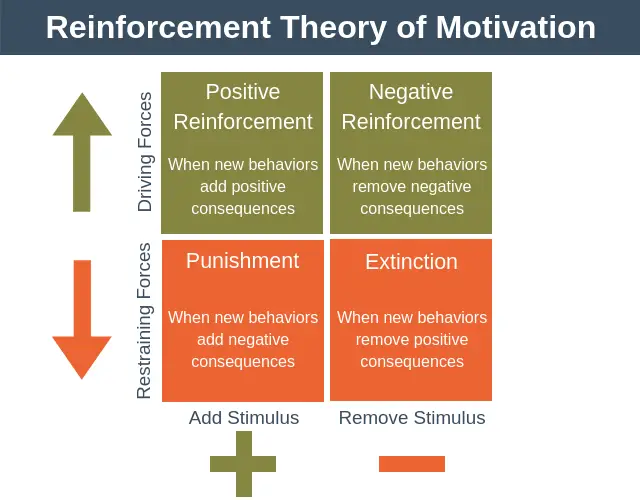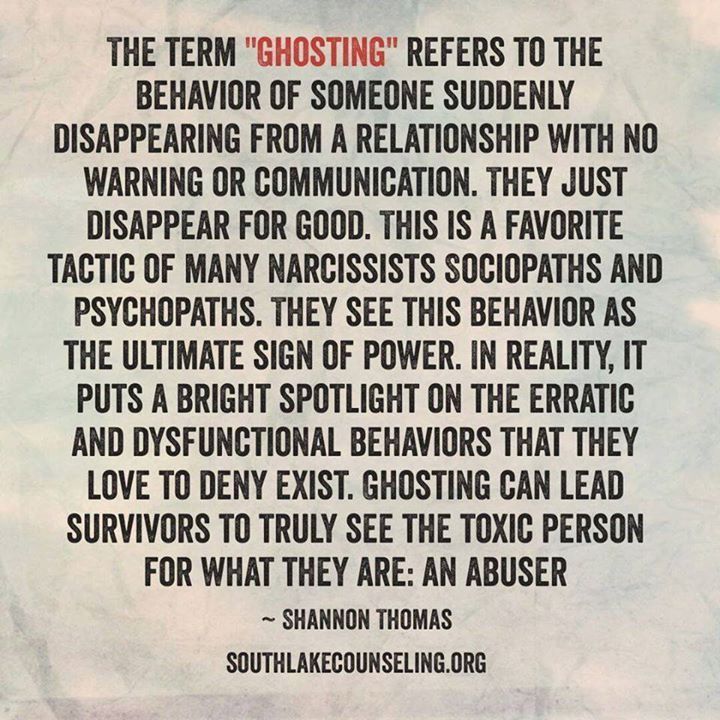What is bathophobia
Fear of Depths Phobia - Bathophobia
Bathophobia means the fear of depths. It is fear or anxiety associated with the sea or water bodies of various types, though; many Bathophobic individuals are also known to fear tunnels, mountain valleys or caves.
The word Bathophobia originates from Greek word bathios which means “deep or depth” and phobos meaning “aversion, dread or fear”. People living with this phobia try to avoid lakes, swimming pools, seas, hallways, wells, mountain valleys, tunnels or all other things that have depth associated with them. When they do encounter these, they tend to experience apprehension or have a full blown panic attack. They often realize that their fear is irrational however they are unable to overcome it. In some extreme cases, their fear may even interfere with their daily lives.
What are the causes of Bathophobia?
Like many specific phobias, the causes of Bathophobia are often unknown; however, most experts believe that they stem from negative or traumatic events in the individual’s early life. Thus, having witnessed a loved one drown, or even watching an older adult/caregiver/parent show a fear of depths can trigger Bathophobia. One Bathophobe recalls having been asked by his teacher to plunge his hand inside a 5 gallon jar for removing dead creatures that their class was studying in Biology. He recalls experiencing a “shiver and feeling of great apprehension” at the thought of encountering “the unexpected”. This incident led him to fear depths of all kinds even into his adulthood.
Anxiety and phobias related to deep water bodies such as seas, rivers etc can be precipitated by number of stressors and are often evolutionary. The ocean has, right since times unknown, embodied extreme fears of mankind. These include falling headlong into an abyss, being attacked by dangerous sea predators, fearing overhead environments etc.
Media, TV and movies, news reports of accidents related to depths can also instill such fear in high strung or anxious individuals.
Many medical conditions are also known stressors that lead to anxiety and phobias: diabetes, menopause, PMS, certain cardiac conditions, thyroid or parathyroid related illnesses combined with daily environmental stress can be deadly combinations that could trigger the fear of depths.
Symptoms of fear of depths
The symptoms of fear of depths phobia vary from person to person and situation to situation. Like in all other specific phobias, the symptoms of Bathophobia include:
Quiz: Do You Have an Anxiety Disorder? Take the Test Now
- Feeling nauseated
- Experiencing hot and cold flashes
- Shivering, trembling, trying to flee from the place
- Hysterical response like crying, screaming
- Feeling dizzy, having an elevated heart rate, breathing in rapid and deep manner
- Feeling total loss of control, feeling ‘unreal’.
- Having thoughts of death or dying.
- Feeling trapped or unable to escape
- Avoidance behavior: avoiding the beach and other water bodies or excursions that involve valleys and mountains or traveling through tunnels, etc.
Whatever its symptoms; Bathophobia can cause great emotional turmoil that might interfere with one’s ability to function normally and might completely disrupt the phobic’s day to day life.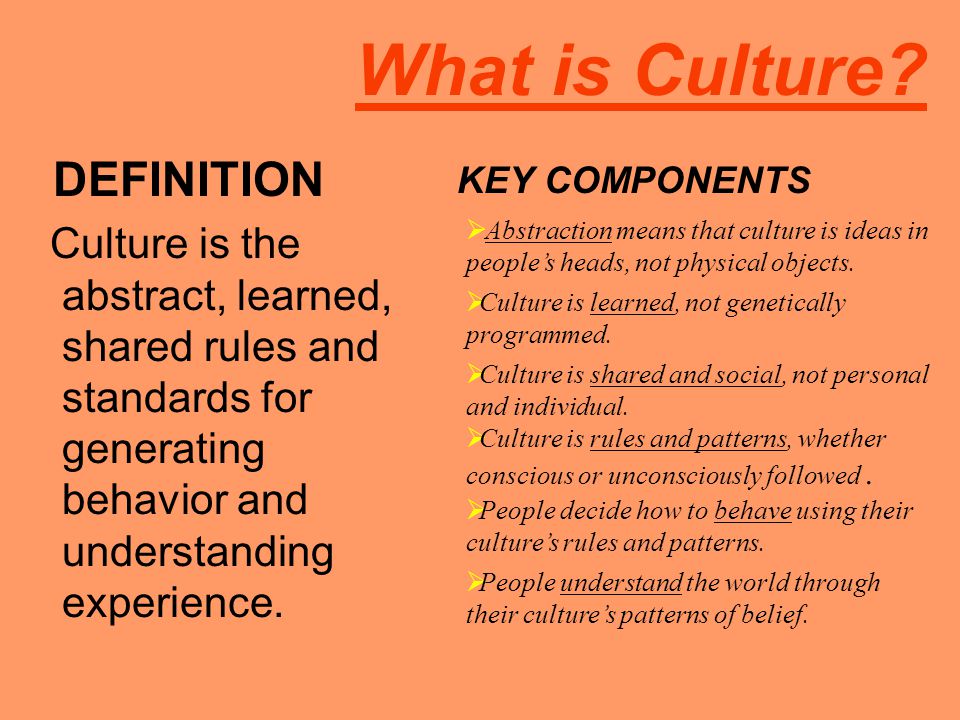
Overcoming the fear and anxiety associated with depths
Psychological techniques to overcome Bathophobia
Many people wish to scuba dive. They might have seen pictures and videos of people diving and having a good time. However, their fear of depths prevents them from enjoying activities related to the sea. The use of medications in such individuals has shown favorable results in overcoming stress and anxiety associated with diving. Some examples of medicines are imipramine (Tofranil), propranalol (Inderal) or alprazolam (Xanax). However, doctors often hesitate to prescribe these as they are known to cause extreme drowsiness that can impair a diver’s ability to focus and concentrate.
Non-pharmalogical techniques are the best bet to overcome fear of depths phobia. To name a few: Hypnosis, systematic desensitization, CBT or cognitive behavior therapy, Implosion therapies etc have all been known to successfully help people overcome Bathophobia.
A series of mental exercises such as imagining oneself approaching a valley or deep water body, or stepping into the water body or wearing the scuba diving/paragliding equipment and actually diving are known methods of overcoming one’s anxiety response. Some other methods include in-vivo exercises such as actually standing in waist deep water or walking in the pool etc.
Some other methods include in-vivo exercises such as actually standing in waist deep water or walking in the pool etc.
These are a few proven methods of overcoming Bathophobia once and for all.
Bathophobia (Fear of Depths) - Psych Times
Bathophobia is the irrational fear of depths. Someone experiencing this condition may find it extremely difficult to even think about depths, let alone be near them in real life. Their fear of depths may be due to the fear of the unknown. Their fear of depths may include the vastness of the ocean, caves, canyons, or anything else that is somewhat analogous.
People who suffer from bathophobia may also suffer from ligyrophobia (fear of loud noises), achluphobia (fear of darkness), or acrophobia (fear of heights), among others as all of these phobias share a similar theme. The theme that all of these phobias appear to share is that all of the specific fears associated with each phobia seem to all be evolutionarily advantageous.
For instance, someone suffering from bathophobia or acrophobia may be due to centuries and centuries of evolutionary adaptations. This is likely the reason as to why most people become extremely anxious when near the edge of a cliff or when overlooking the railings on a balcony several stories high. This innate terror that most of us experience is likely meant to help protect us from imminent danger.
This is likely the reason as to why most people become extremely anxious when near the edge of a cliff or when overlooking the railings on a balcony several stories high. This innate terror that most of us experience is likely meant to help protect us from imminent danger.
Someone with severe bathophobia may experience anxiety that is so extreme that they may even endure panic attacks that may force them to be hospitalized. However, this is likely to be a rare occurrence.
Symptoms of Bathophobia
People suffering from bathophobia will find themselves enduring heightened amounts of anxiety that may greatly hinder their day to day life. For instance, someone living near a lake, ocean, or mountains may be highly anxious individuals due to their fear of depths being difficult to avoid. Nevertheless, avoidance may still be something that someone with bathophobia may try to implement in an attempt to relieve their intrusive anxiety.
Someone with bathophobia may make major life decisions that are based solely on their irrational fear of depths. For example, they may choose to live in areas that are more inland to avoid oceans, as well as areas absent of lakes due to the depth of them. They may also choose to live in very flat areas to ensure that they will not encounter mountains or cliffs.
For example, they may choose to live in areas that are more inland to avoid oceans, as well as areas absent of lakes due to the depth of them. They may also choose to live in very flat areas to ensure that they will not encounter mountains or cliffs.
If someone is also suffering from an additional disorder such as generalized anxiety disorder (GAD) or obsessive compulsive disorder (OCD), among others, then they may experience exacerbated symptoms of bathophobia. For example, someone with OCD may find themselves obsessing about things throughout their day to day life. So, it is not implausible to conceive such a person eventually becoming obsessed with their fear of depths.
AdvertisementsBelow, you will see some more common symptoms of this phobia:
- Intense anxiety when near great depths
- Anxiety at the mere thought of depths
- Unable to control very strong emotions
- May experience panic attacks
- Muscle tension, shakiness, and sweating
Causes of Bathophobia
There is no known cause of bathophobia. However, there is a consensus among most mental health professionals that both genetics and one’s environment play significant roles in someone developing any give mental disorder. So, someone with a family history of mental disorders, especially anxiety disorders may have a higher chance of developing bathophobia. This may be due to them then having a higher chance of being genetically predisposed to developing mental illness.
However, there is a consensus among most mental health professionals that both genetics and one’s environment play significant roles in someone developing any give mental disorder. So, someone with a family history of mental disorders, especially anxiety disorders may have a higher chance of developing bathophobia. This may be due to them then having a higher chance of being genetically predisposed to developing mental illness.
If someone were to have a genetic predisposition to develop mental illness, then it may only take them experiencing some sort of traumatic event for them to develop full blown bathophobia. Such a traumatic event which may cause someone to develop an irrational fear of depths may be that they once fell off of a very high platform or that they were once shipwrecked. Such experiences may be so emotionally damaging that it may lead them to develop bathophobia insofar as they have the genetic makeup to do so.
Another potential cause of bathophobia may be that they were already suffering from a different mental disorder beforehand. For instance, someone suffering from GAD may be a highly anxious person who finds day to day aspects of life to be very challenging. So, it is quite plausible to conceive that someone with GAD may develop bathophobia by concentrating a great deal of their daily fears toward depths. The same hypothetical can be seen with other anxiety disorders like OCD, for example.
For instance, someone suffering from GAD may be a highly anxious person who finds day to day aspects of life to be very challenging. So, it is quite plausible to conceive that someone with GAD may develop bathophobia by concentrating a great deal of their daily fears toward depths. The same hypothetical can be seen with other anxiety disorders like OCD, for example.
Though we can speculate as to what the many possible causes of bathophobia may be, the overwhelming consensus is that genetics and environment play crucial roles in the development of any given mental disorder.
AdvertisementsBathophobia Treatments
Just as there is no known cause of bathophobia, there is also no known treatment method specifically designed for this disorder either. However, as is the case with virtually all phobias, exposure therapy is one of the most beneficial forms of treatment for people suffering from phobias.
Exposure therapy works by having the therapist slowly expose the patient to that which they fear over a given period of time. Though the patient will likely experience a great deal of anxiety when exposed to their fear, the goal is for them to eventually be desensitized from their fear so that it will bother them less over time.
Though the patient will likely experience a great deal of anxiety when exposed to their fear, the goal is for them to eventually be desensitized from their fear so that it will bother them less over time.
It is imperative to ensure that the therapist implementing exposure therapy is very knowledgeable and experienced with treating phobias. The importance of this lies in the fact that if the patient is exposed to too much too soon, then this may have an opposite affect by worsening their bathophobia as opposed to helping to desensitize them from it.
The therapist may expose the patient to depths by showing them pictures or videos of areas with great depths. These images will likely give the patient a high amount of anxiety, but if implemented correctly, the end goal will be the patient being less affected by the images over time. Thus, minimizing their symptoms of bathophobia.
AdvertisementsYoga Poses for Bathophobia
There are numerous different yoga poses that can substantially benefit someone who is suffering from bathophobia. In part, this is due to the meditative state of mind that yoga tends to emit in those who practice it on a consistent basis. Yoga can be thought of as meditation in motion. It can help to relieve some of the anxiety associated with bathophobia due to the mere fact that by engaging in yoga, your attention will be redirected to something more productive.
In part, this is due to the meditative state of mind that yoga tends to emit in those who practice it on a consistent basis. Yoga can be thought of as meditation in motion. It can help to relieve some of the anxiety associated with bathophobia due to the mere fact that by engaging in yoga, your attention will be redirected to something more productive.
There are many different types of yoga that someone with bathophobia can benefit from, such as hatha yoga or hot yoga, among many others. Nevertheless, regardless of the many different forms of yoga that exist, virtually all of them can help to relieve some of the stress and anxiety that is associated with bathophobia.
If you have never practiced yoga before, then it may be in your best interest to take a class or watch some guided videos that can help you through each pose. Just like with meditation, the more you practice yoga, the more adept you will become at it. Besides helping you to reduce your symptoms of bathophobia, you can also expect to acquire increased strength and flexibility, among other benefits.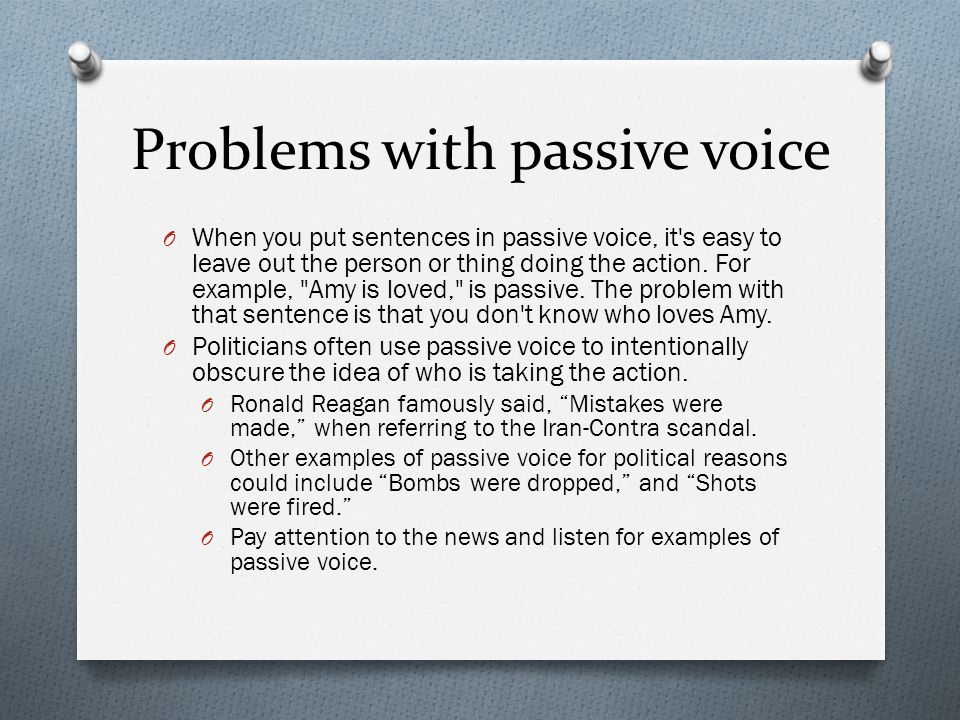
Mindfulness-Based Stress Reduction (MBSR) for Bathophobia
MBSR is an 8-week evidence-based program that offers secular, intensive mindfulness training to help people who are suffering from anxiety, stress, depression, and other sorts of mental anguish. MBSR may be able to significantly help someone who is suffering from bathophobia as mindfulness meditation has been shown to be very beneficial for anxious people. In such a structured program, someone with bathophobia can expect to learn a plethora of different skills that can help them to relieve the intense anxiety that’s associated with their specific phobia.
Talk to your doctor or therapist to see if MBSR can help you to reduce the intensity of your symptoms of bathophobia, as well as where to find MBSR programs in your area.
Meditation for Bathophobia
There are many different forms of meditation that exists which can be very advantageous for someone suffering from bathophobia. Specifically, mindfulness meditation has been shown to be quite beneficial for helping people to enter into a more equanimous state. There are many different ways with which you can implement mindfulness meditation and there are also many different meditation apps which are designed to make things as easy as possible for you.
Specifically, mindfulness meditation has been shown to be quite beneficial for helping people to enter into a more equanimous state. There are many different ways with which you can implement mindfulness meditation and there are also many different meditation apps which are designed to make things as easy as possible for you.
Mindfulness has the potential to significantly help those suffering from bathophobia due to how it will help one to distract themselves from their fear by refocusing their attention onto something else that does not have any sort of emotional baggage attached to it, such as by focusing on the breath for example. This is one of the most basic ways that one can meditate and be present.
For someone with bathophobia in the midst of a panic attack, redirecting one’s attention to the various sensations felt when breathing can actually help to reduce the amount of mental anguish experienced during such an influx of anxiety.
To implement mindfulness meditation to help relieve one’s symptoms of bathophobia, you can do so by paying close attention to the way the muscles in your abdomen and chest contract and relax with every inhale and exhale. You can spend time dwelling on how it feels as your chest expands during each inhale and how it sinks in with every exhale.
You can spend time dwelling on how it feels as your chest expands during each inhale and how it sinks in with every exhale.
Besides focusing on your breathing, you can also focus on the sounds around you, the way your skin feels as you touch certain objects, the way foods taste, as well as the way certain aromas smell. Essentially, honing into your 5 senses can significantly help you to reduce some of the anxiety that is associated with bathophobia. Also, remember that it will take a lot of practice to become an adept meditator. So, practice is key.
Exposure Therapy for Bathophobia
As previously mentioned, exposure therapy is one of the most common ways to treat anxiety disorders such as bathophobia. It can be an efficient way to help desensitize the patient to their specific fears. Be that as it may, it is imperative that the therapist implementing it on their patient is very adept at doing so. For example, if the therapist were to slightly expose someone with bathophobia to their fear, then it may not be very effective as they may need a higher amount of exposure to truly trigger any sort of worthwhile change in the patient.
The same can be said for the antithesis of this scenario. If the therapist were to excessively expose someone with bathophobia to their fear, then doing so could be highly counterproductive to the point to where their bathophobia may become immensely worse due to the therapy alone. So, it is paramount that the therapist implementing exposure therapy for someone with bathophobia has a very strong sense of just how severe their symptoms are so that they can know the level of exposure that the patient will likely be able to handle.
AdvertisementsCognitive Behavioral Therapy (CBT) for Bathophobia
CBT is a psycho-social intervention that aims to improve one’s mental health. It is a modality that is often used to treat people suffering from anxiety disorders such as generalized anxiety disorder and OCD. Someone with bathophobia may also be able to benefit from CBT as well seeing as how it would allow them to have a much better understanding as to why they think and behave the way they do in relation to their irrational fears.
CBT can be immensely helpful for someone with bathophobia given the sheer automaticity of their symptoms. For example, when someone with bathophobia is exposed to their fear, they will almost always have an instantaneous subconscious reaction to their fear. Such a lack of introspection is likely a large part of why someone with this condition will suffer to the extent that they will. CBT can help you to take a step back and analyze your fears more deeply than you typically would.
Besides learning to be more fastidious with regards to understanding one’s specific fears, someone with bathophobia engaging in CBT can also expect to learn various other skills aimed at helping to relieve the anxiety caused by their condition.
Psychiatric Medications for Bathophobia
Anti-anxiety meds
These types of medications are very useful to help prevent panic attacks. Such drugs can be extremely useful for people suffering from severe bathophobia due to the fact that people with phobias often experience panic attacks as well. Some common anti-anxiety medications include Xanax, Valium, and Klonopin, among many others.
Some common anti-anxiety medications include Xanax, Valium, and Klonopin, among many others.
These types of drugs are not typically taken on a daily basis, but they may be insofar as their bathophobia is severe enough. However, this is something that you should first discuss with your doctor before you decide to do so to ensure that it is safe and effective.
AdvertisementsAntidepressants
These types of medications aren’t only for people who suffer from depression as they can also help people suffering from anxiety disorders as well, such as bathophobia. Some common antidepressants are Paxil, Zoloft, and Lexapro, among several others. These drugs may be able to help reduce some of the symptoms of bathophobia.
These types of drugs are typically taken on a daily basis. They can indeed help prevent panic attacks from occurring, but they are more so used to help reduce people’s daily anxiety. Talk to your doctor to see if taking antidepressants can help to reduce your symptoms of bathophobia, as well as whether or not it is safe to do so.
Exercise for Bathophobia
Exercise has been shown to be extremely beneficial for people suffering from anxiety disorders, including bathophobia. Specifically, cardiovascular exercise can significantly help to relieve one’s stress. This is not to say that weight-resistance training would not benefit someone with anxiety, but rather that aerobic exercise is has been shown to be more effective at releasing those feel good chemicals in the brain, such as endorphins.
According to the American Psychology Association, exercise can help to condition the mind to better cope with stressful situations. This makes sense when we take into consideration the high amount of stress that the body is put under during strenuous exercise. So, if you yourself are sedentary, then engaging in some form of aerobic exercise may be able to significantly help reduce your symptoms of bathophobia by making it much easier for you to cope with the anxiety and stress that’s associated with this condition.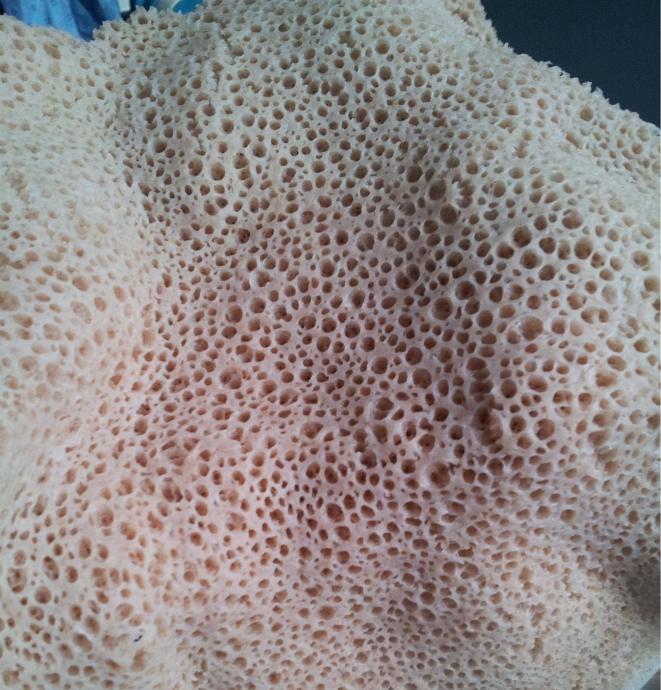
There are many different aerobic modalities that you can partake in to help reduce your symptoms of bathophobia, such as swimming, biking, skiing, walking, and jogging. You can also acquire the many benefits of exercise by playing sports such as tennis, soccer, basketball, and racquetball, among many other sports. Engaging in some form of exercise consistently may be able to help relieve some of the pain associated with bathophobia over time.
Limiting Caffeine for Bathophobia
AdvertisementsIt is no secret that consuming large amounts of caffeine throughout the day can aid in making you more anxious. This makes sense when we look closely at how caffeine affects our body’s physiology. When we consume a high dose of caffeine, our heart will start to beat faster and we become more tense. Essentially, our body will begin to go into a “fight or flight” state of mind. Such a frame of mind is often a precursor for someone with bathophobia to experience panic attacks.
So, consuming little to no caffeine throughout the day may be able to significantly help reduce your day to day anxiety. Although doing so will likely not make all of your anxiety go away, it will indeed help you to reduce any unnecessary suffering that you would have otherwise experienced if you were to consume a large amount of caffeine.
Beverages like coffee and tea are often high in caffeine, as well as some energy drinks. In fact, even some foods have caffeine in them as well, such as dark chocolate. Being more conscious of your daily caffeine consumption may help you to reduce some of the symptoms associated with bathophobia.
Dialectical Behavior Therapy (DBT) for Bathophobia
DBT is a very effective form of treatment for people struggling with emotion regulation. It is often used to treat people suffering from borderline personality disorder. Nevertheless, it can also be very advantageous for someone suffering from anxiety disorders like bathophobia too. This is due to the numerous amount of coping skills you can expect to learn in a DBT group. These groups typically last about 6 months long and can have anywhere from two people to several people depending on how many join the group.
This is due to the numerous amount of coping skills you can expect to learn in a DBT group. These groups typically last about 6 months long and can have anywhere from two people to several people depending on how many join the group.
One very effective DBT skill for helping someone with bathophobia is half-smiling. This technique works by having you think about that which you fear or upsets you all while slightly raising the corners of your mouth by lightly smiling, thus the term “half-smiling.” Although, it isn’t enough to just think about your fear while half-smiling, you also have to try and refrain from entertaining those painful emotions that your specific fear may evoke.
Mindfulness meditation is also heavily used in DBT and can greatly benefit someone with bathophobia as it is done in a group setting, which helps to put the patient out of their comfort zone. These group mindfulness practices may include drinking warm tea to hone in on the sense of taste and tactile senses or simply focusing on the breath.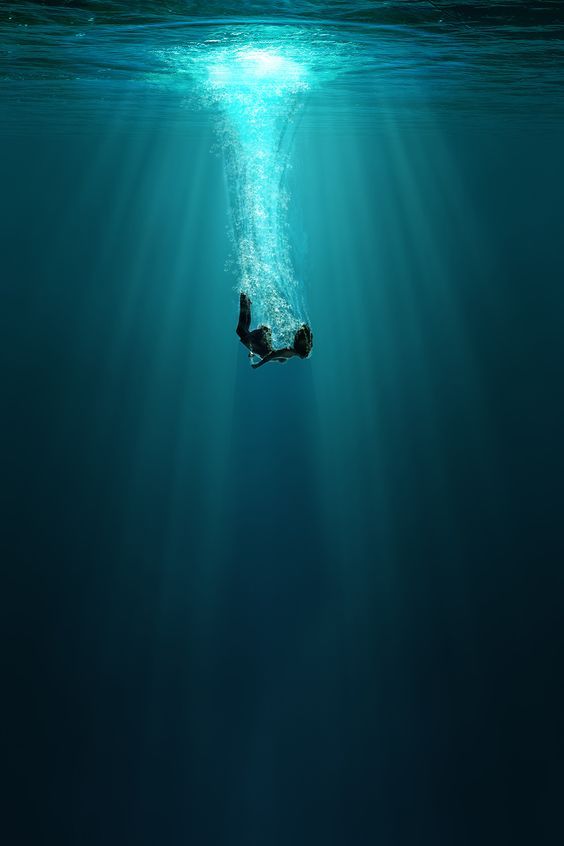
Coping ahead is another very useful DBT skill that can help someone with bathophobia. With coping ahead, you will want to find a place where you can sit down quietly without distraction. Close your eyes and then think about the many different possible scenarios where you would face your specific fear and overcome it or cope with it. Doing so will help you to be much better adept at coping with your bathophobia when you are actually exposed to the specific fear associated with it in real life.
If you think you may be suffering from some of the symptoms of this condition, then you may benefit from therapy. Feel free to reach out to your doctor or local mental health clinic to see what your available options are and to see if there is any sort of discount or promo code available to help you with the costs of treatment, as well as if your health insurance will cover treatment costs.
Advertisementsreport this adBathophobia - fear of depths
Bathophobia means a morbid fear of deep places. In addition to intense anxiety, the patient may experience many unpleasant physical symptoms such as abdominal pain, chills, and sweating. Cognitive-behavioral therapy is mainly used in the treatment of this fear.
In addition to intense anxiety, the patient may experience many unpleasant physical symptoms such as abdominal pain, chills, and sweating. Cognitive-behavioral therapy is mainly used in the treatment of this fear.
Phobia is associated with the fear of certain situations and the desire to avoid them. The patient considers his fear unfounded, which proves his ability to critically evaluate his experience. One type of this disorder is bathophobia. It is found when the anxiety reaction to depth is excessively high and it is impossible to control the fear experienced.
Causes of bathophobia
Bathophobia is a type of specific anxiety disorder that manifests itself in the fear of abysses, depths or tunnels. The disease is not specific to any particular age group and can develop at different stages of life. Its formation can be caused by a number of different factors, the most important of which are environmental and genetic. Experts point to a relationship between exposure to depth-related trauma in childhood, such as bad experiences while learning to swim or the loss of friends or family in the water. Presenting scary stories or visualizations of deep space may also play an important role in the development of bathophobia.
Presenting scary stories or visualizations of deep space may also play an important role in the development of bathophobia.
What does the anxiety experienced by a person with bathophobia look like?
In fact, fear is one of the most common human reactions. It plays an important adaptive role in survival and avoiding the risk of harm. The fear response activates the processes necessary for protection. Anxiety in bathophobia is described as extreme, irrational, disproportionate, intense, maladaptive, and unwanted.
The feeling of fear caused by the phobic factor does not correspond to the real danger. A person suffering from this disease does not experience the usual feeling of fear, but pathological reactions. He reacts with great concern to a neutral situation that is not associated with any threat. People struggling with fear of depth cannot justify the sensations, thoughts, emotions, and behaviors they experience after being exposed to an anxiety stimulus.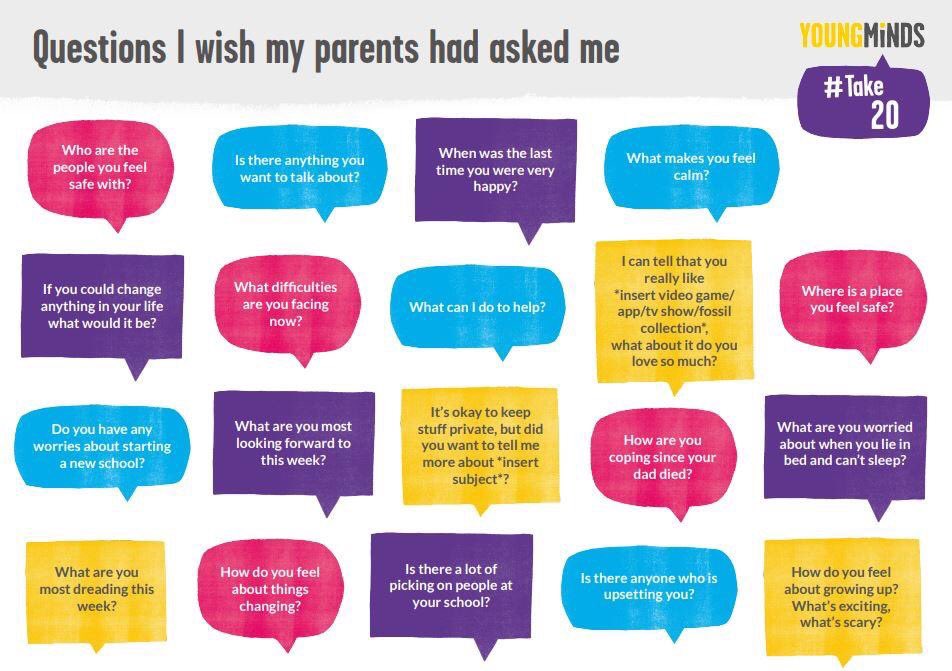 They realize that their fear is inadequate, but they cannot explain why this is happening. In addition, the feeling of fear is involuntary, which means that it cannot be controlled.
They realize that their fear is inadequate, but they cannot explain why this is happening. In addition, the feeling of fear is involuntary, which means that it cannot be controlled.
How does bathophobia manifest itself?
People struggling with bathophobia will try at all costs to avoid environments that may give rise to an unpleasant anxiety reaction. Most psychological currents agree that depth avoidance while avoiding the anxiety response is also a major factor in maintaining the disorder.
Bathophobia, in addition to the characteristic properties of anxiety, is also manifested by a number of symptoms. During it, the patient experiences both cognitive-behavioral and physical reactions. You may notice: increased heart rate and breathing, tachycardia, increased sweating, muscle tension, dilated pupils, dry mouth, nausea, pallor or redness of the skin, catastrophic thoughts, stress, high blood pressure, abdominal pain and other uncontrollable sensations. The appearance of these symptoms during an anxiety reaction can be different. Sometimes it is enough to imagine deep spaces for them to appear without exposing oneself directly to the real situation.
The appearance of these symptoms during an anxiety reaction can be different. Sometimes it is enough to imagine deep spaces for them to appear without exposing oneself directly to the real situation.
How is bathophobia treated?
The treatment of bathophobia is based on psychotherapy. Cognitive behavioral therapy is used, which is developed on the basis of the principles of behaviorism, that is, learning through conditioning. The most commonly used method is systematic desensitization and relaxation directly related to this. In desensitizing a patient, he or she is exposed to a phobic factor in reality or imagination in order to develop the ability to cope with the anxiety response. The method is based on a gradual decrease in the intensity of the anxious response based on a previously developed hierarchy of fear-provoking situations.
One can begin to get rid of the fear of depth by observing the feet as they are immersed in water. Over time, the level of water that enters the body increases. Relaxation is directly related to desensitization training. The patient is advised to do yoga, breathing training, meditation, music therapy, aromatherapy, etc. Through relaxation, he becomes more calm, relaxed, and as a result, fear becomes less strong, muffled, weak.
Relaxation is directly related to desensitization training. The patient is advised to do yoga, breathing training, meditation, music therapy, aromatherapy, etc. Through relaxation, he becomes more calm, relaxed, and as a result, fear becomes less strong, muffled, weak.
In the fight against bathophobia, it helps to create a positive image of depth in one's own mind by watching films about wildlife and the beauty of the oceans or photographs of beautiful beaches. By focusing your attention on this perception, you can get a positive view of water. But sometimes medication is still necessary.
No comments yet…
Bathophobia (fear of depth): how to get rid of it
Bathophobia is the name of an overwhelming fear of depth. This is not just a fear, it is a fear of water bodies and deep pools. A person can easily wash his hands, drink tea and water from a bottle. Feel free to step into a puddle. But at the sight of a lake, river or sea, he takes his breath away. The bathtub with water is also not credible. She prefers showers. Why bathophobia appears, how it manifests itself and whether it is possible to get rid of it, read in this article.
The bathtub with water is also not credible. She prefers showers. Why bathophobia appears, how it manifests itself and whether it is possible to get rid of it, read in this article.
Content
- Fear of depth: Determination and types of phobia
- Objective
- Subjective
- Destructive
- Causes of depth of depth
- The behavior of a person suffering from
- Physical and psychological manifestations
- Treatment of bathophobia
- What can be done about bathophobia on your own
- How to help a child overcome fear of depth
- Conclusion
Fear of depth: definition and types of phobia
So, bathophobia is the fear of depth. This is a mental disorder associated with strong negative emotions, because of which a person avoids large and small bodies of water.
Psychologists distinguish three subspecies of bathophobia.
Objective
A person who has witnessed a tragedy on the water or has been in a dangerous situation himself may experience fear of depth.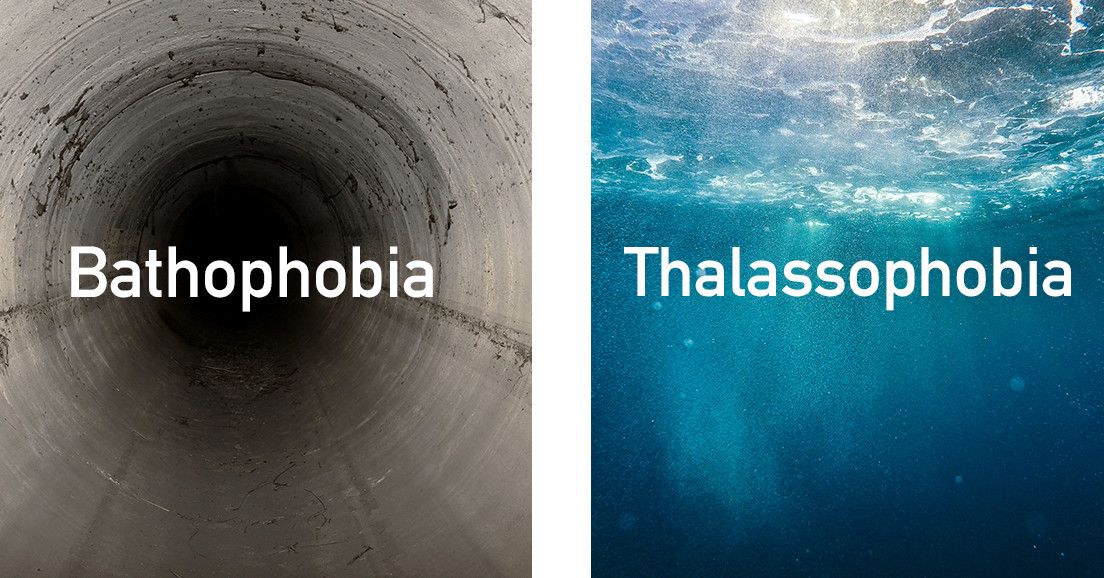 This kind of phobia is based on objective memories. There was a real danger. Any person, even with the most healthy psyche, can suffer from bathophobia. The reason for this is the experienced real events.
This kind of phobia is based on objective memories. There was a real danger. Any person, even with the most healthy psyche, can suffer from bathophobia. The reason for this is the experienced real events.
Subjective
Fear of depth appears without any reason. People who are anxious and prone to panic attacks see danger in many things. And depth is one of them. Fear has no objective cause. A person can swim perfectly where there is a bottom under his feet. And at a depth he is seized by panic, an attack of abtophobia occurs. This is due to the peculiarities of the psyche, other injuries and phobias.
Destructive
Destructive bathophobia or fear of water is the most difficult case. It is associated with living fantasy and mental disorders. A man on the sea does not enjoy beauty, but imagines sea monsters, situations in which he can drown. These are fantasies based on movies and fairy tales.
Destructive bathophobia occurs in nervous people, as a rule, with a fine mental organization and violent imagination. Against the background of their own fantasies, there may be a feeling that a person hears the voices of mermaids, sees a shark fin above the water, or feels how the depth is addictive.
Against the background of their own fantasies, there may be a feeling that a person hears the voices of mermaids, sees a shark fin above the water, or feels how the depth is addictive.
All three forms of bathophobia are reversible. For each of them, psychologists will select an individual therapy.
Reasons for the development of fear of depth
Different events from childhood or adult life serve as the cause of bathophobia.
- Fear of the child drowned in the bathroom.
- Water got into the ears or nose, causing pain.
- Someone from relatives or acquaintances drowned or nearly drowned.
- A man witnessed someone drown.
- The child listened to or watched fairy tales/films where sea monsters dragged ships to the bottom, mermaids killed sailors.
- Films about shipwrecks.
- Fear of becoming entangled in seaweed or fishing net.
- Myths, legends told to an impressionable person.
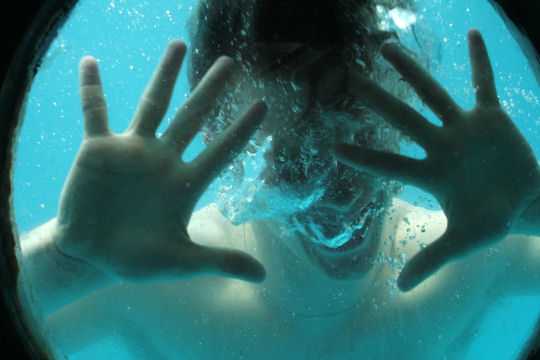
Any traumatic event associated with water can trigger the development of bathophobia or fear of depth.
The behavior of a person suffering from a fear of the depths
People with bathophobia diligently avoid situations where they will have to face their fear:
- Going to the beach.
- Walk along the embankment.
- Swimming in the pool.
- Swimming in open water.
- Many are afraid to even take a bath. Most often these are children, but there is such a phobia in adults. They prefer showers.
- Watching films about water, monsters, sea adventures.
Many people are afraid not of the very depth, but of getting entangled in algae. Fear arises from the inability to swim. This happens if there have already been similar cases.
At the root of bathophobia, like many other fears, lies the fear of death. A strong instinct for self-preservation dictates to beware of dangerous situations. But the problem is what is considered a dangerous situation:
But the problem is what is considered a dangerous situation:
- Is it dangerous for a child to bathe in a bathtub under adult supervision?
- Is it dangerous to sail down the river in a boat if you know how to swim?
- Is it dangerous to swim in the sea with thousands of other beach goers?
- Is it dangerous to swim in the pool under the supervision of a professional instructor?
No. And the psyche gives out such and other similar situations as danger. The threat is false. But the reaction of the body is real and bathophobia too.
Physical and psychological manifestations of the disorder
What happens to a person who suffers from bathophobia? Study these symptoms. If they are not, it is probably not a phobia. Simple fear, anxiety that occurs on the water, have nothing to do with the real, pathological fear of depth, water.
Symptoms of bathophobia
- Uncontrollable fear when bathing, swimming.

- Anxiety, if you need to go to a potentially dangerous area (to the sea, to the river, cross the body of water in a boat).
- Weakness in arms and legs.
- Dizziness.
- Nausea, feeling of hunger or complete lack of appetite.
- Lump in throat.
- Feeling of derealization (as if everything is unreal).
- Desire to get further away from the water.
- Increased heart rate, palpitations.
- Pressure increase.
These and other physiological signs confirm the presence of a phobia or fear of depth, water.
Treatment of bathophobia
Bathophobia or fear of depth can be treated with the right approach.
What are the advantages of being treated by a psychotherapist?
- He will diagnose correctly.
- Detects the type of fear.
- Find the cause of the fear of depth.
- Prescribes the right sedatives to relieve anxiety.
- Eliminate associated disorders.
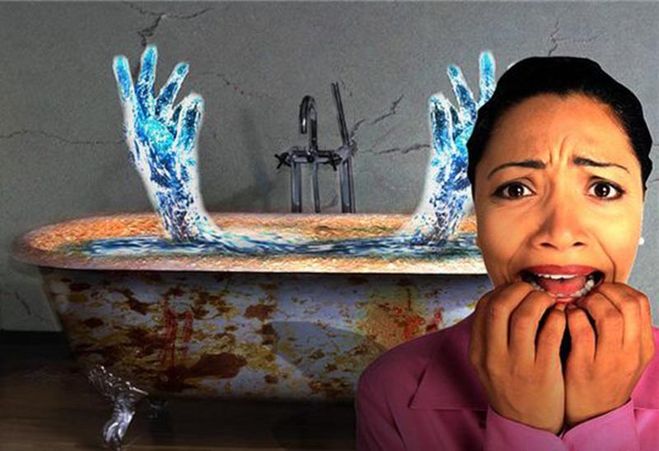
Fear of depth can be confused with fear of water. A person cannot self-diagnose. It happens that there was no traumatic situation associated with water at all. He's just an impressionable person, he's seen enough films. Or has irrational beliefs about water and depth.
What can be done about bathophobia on your own
- Create positive associations with water. Watch positive films about fish, beautiful photos of the deep sea.
- Slowly force yourself to go into the water. First, just wet your feet. Then - knee-deep. And so gradually. You can do it in the pool.
- Recall all possible traumatic situations that contributed to the development of bathophobia. Disassemble them. Develop the right response.
- Eliminate fear from the subconscious, replace it with positive feelings. Every time you feel fear, replace it, for example, with sympathy for marine life. Admired by sailors and surfers.
The list is not long. Psychotherapy is an ever-evolving field. And this is the best solution for everyone who suffers from one form or another of bathophobia. Psychologists see more than a person can understand on their own. In some cases, psychologists suggest using hypnosis. In a state of hypnosis, the doctor works directly with the subconscious. So you can not only find a forgotten memory from childhood, but also change negative associations. This impact directly on the cause of the problem.
Psychotherapy is an ever-evolving field. And this is the best solution for everyone who suffers from one form or another of bathophobia. Psychologists see more than a person can understand on their own. In some cases, psychologists suggest using hypnosis. In a state of hypnosis, the doctor works directly with the subconscious. So you can not only find a forgotten memory from childhood, but also change negative associations. This impact directly on the cause of the problem.
After treatment by a psychotherapist, the fear of depth disappears. There are no more negative associations with water. A person does not feel in danger, being on the coast or in his own bathroom.
How to help a child overcome fear of depth
Children's fears are more complex, deeper than those of adults. It is better to take a child suffering from bathophobia to a psychotherapist. On your own, you can only do what definitely does not harm. You can watch documentaries about the inhabitants of the sea.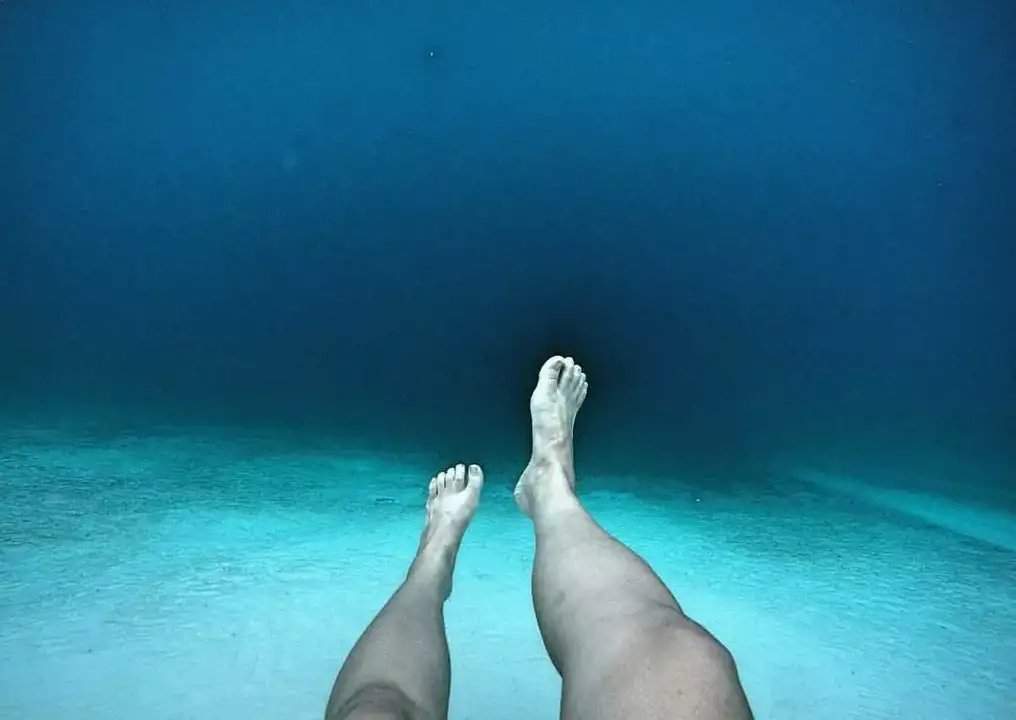 Show the sea from the good side. You can fill the bath with some water and let the baby play. Be sure to wear sleeves to completely eliminate the possibility of water entering the nose. Children don't like this.
Show the sea from the good side. You can fill the bath with some water and let the baby play. Be sure to wear sleeves to completely eliminate the possibility of water entering the nose. Children don't like this.
You can watch other children swim in the pool. With the permission of the child, you can try to teach him to swim. But this is done very carefully so as not to provoke a panic attack.
If the child is afraid, do not drag him into the water. Often the scars on the psyche are left by the good old method of parents. So many were taught to swim before: on a log, father and son swim to the middle of the river, and there the father pulls the log out from under his son. Where to go? The instinct makes the child swim.
Such methods leave scars on the human psyche. As a result, then there is bathophobia. You can't do that to a child. There are many other ways to teach a child to swim. But all of them must be used carefully. Especially if there is a fear of depth or water.![]()





